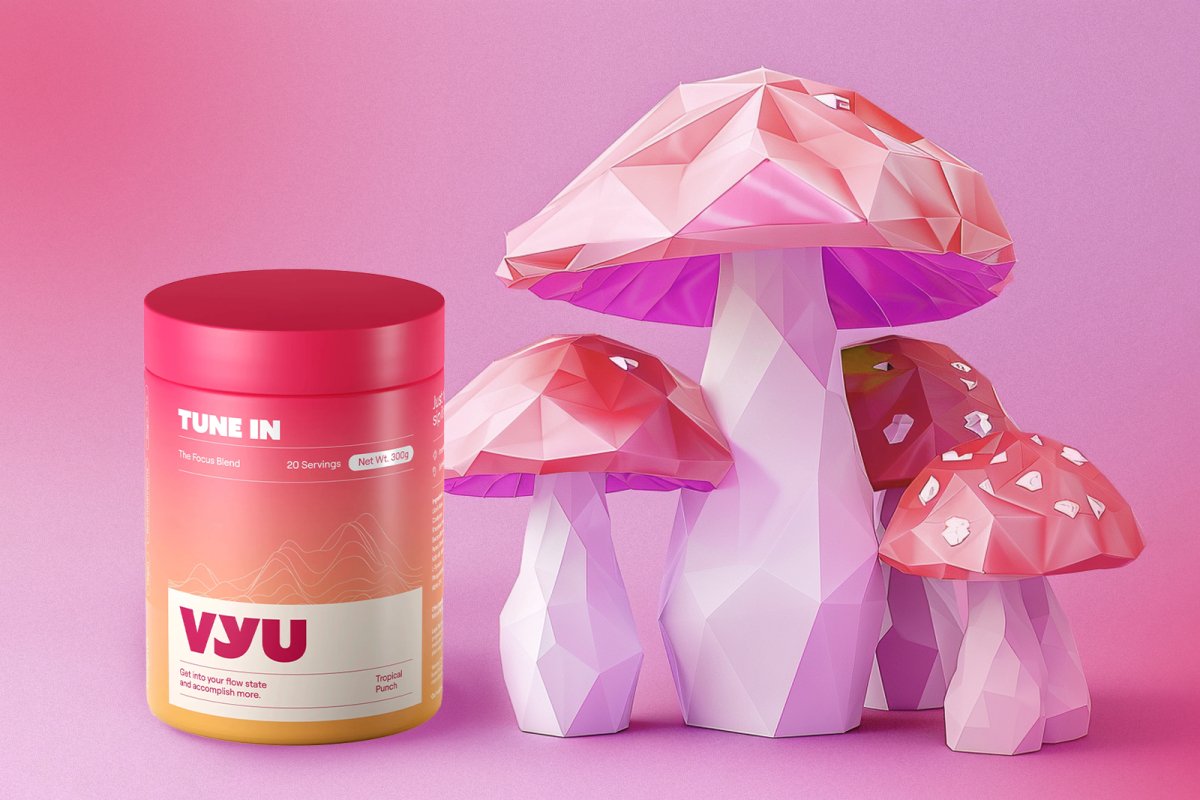

How to be in Flow State All the Time
Published:
Updated:
There are very high chances that you have come across the term in the zone. Most people use it to describe focusing on a task without any distractions. It requires motivation and a lot of concentration. That is what it means to be in a flow state.
To achieve a flow state at all times, you should highlight your goals and challenge yourself. Also, get to know yourself more, and pick a time with few distractions for your projects.
Being in the zone is what scientists describe as a flow state. To understand how to achieve and maintain a flow state for a period, you need to know what it is. Also, you should understand the science behind it.
Key Takeaways
- The term flow was coined by the psychologist Mihly Cskszentmihlyi in the 1960s.
- Flow state means being completely present and focused on a task. Its often called being in the zone.
- Flow state can last between 10 minutes and 2 hours. Besides, you can achieve it several times throughout your day.
What is Flow?
The term flow first came into light in the 1960s. It was a result of research by Hungarian- American psychologist Mihly Cskszentmihlyi who discovered the flow state is a highly focused mental state conducive to productivity.
Cskszentmihlyi and his team came up with the theory of flow after interviewing people about times in their lives when they felt most content, in control, and in the moment.
According to Cskszentmihlyi, the best moments in our lives are not the passive, receptive, relaxing times. Instead, they occur when your mind or body is stretched to its limits voluntarily to achieve something worthwhile.
Characteristics of Flow State
The state of flow exists in many aspects of the human experience. Almost anything can have a flow experience. Taking a walk, doing the dishes, or even doing calculus homework can be a flow experience.
Complete Focus
When in flow, your brain focuses on a single task at hand. Here, you have nothing else on your mind and have zero distractions. While in a state of flow, someone will have to take time to interrupt you.
Personal Control
It is only possible to achieve flow when it is voluntary. You need to have the right amount of willpower to focus on the task at hand. Therefore, when you feel like the activity is out of control, you will find it hard to achieve flow.
Feedback
Each time you find yourself in a state of flow, an outcome comes about. Take, for instance, when playing computer games such as cards, there is immediate feedback. You play a certain level and unlock the next, showing your progress.
Challenge
A state of flow has to have the right amount of difficulty. A task that is too challenging will make it impossible to achieve flow due to anxiety or stress. On the other hand, too easy may be boring, thereby hindering flow.
Goal
You can only achieve flow if you have a goal at the end of whatever the activity is. Whether you are coloring a book or watching a video, there is a certain direction to it. This way, you can pay attention and maintain flow.
Timelessness
When you are in a state of flow, you are lost in whatever you are doing at the time. You tend to lose track of time, as it may either speed up or slow down. In most cases, you get surprised when you check the clock.
Peace
Being in a state of flow means that you are calm and solely focused on an activity. In this state, you have no stress or worries. You are also less self-conscious and your anxiety levels are low.
Intrinsic Motivation
Achieving flow requires an activity that is rewarding despite the outcome. Whether you are competing or just for fun, you can be in a state of Flow. Cskszentmihlyi describes this as an autotelic experience.
Disconnect from Physical Needs
When in a state of flow, you lose your self-consciousness for some time. You engage in an activity fully, forgetting that you are tired, thirsty, or need a bathroom break. You may forget to eat or even stay in an uncomfortable position for a long time.
Single-mindedness
You cannot multitask to achieve flow. It involves keeping your brain engaged in a single activity without any distractions. This way, you will focus on an activity, hence flow.
How to Achieve a State of Flow
You can be intentional about creating ways to achieve flow. You do not have to wait for it to happen. Flow is not automatic. There is no way to guarantee flow. Below are some actions to take to achieve flow.
Eliminate External Distractions
To achieve a state of flow, you must experience about ten to fifteen minutes of focus. Each time you lose your focus, you get further away from achieving flow. According to research, it takes 25 minutes to gain full attention after a distraction.
Therefore, you want to get rid of any external distractions to achieve flow with ease. External distractions may include your phone, social media, email tabs, and a noisy working environment.
Highlight Your Goals
The easiest way to achieve a state of flow is to have a finite goal. Having a time goal set may work. However, it is better to have a completion point for your project as it gives a sense of control. You should definitively know what you are working on and the expected outcome.
Make it a Challenge
A state of flow involves the highest levels of engagement in whatever activity you are working on. The task must be challenging enough to have your brain in focus. It should not be too hard as it may hinder flow by causing frustration and stress. Similarly, it cannot be too easy as you can get bored.
Eliminate Internal Distractions
Achieving flow means focusing on a single task with no self-consciousness. Therefore, experiencing stress or having too much on your mind will hinder your journey toward achieving flow.
Daily meditation and journaling may help with such internal distractions. Practicing both will help clear your mind and improve concentration. In addition, it will limit wandering and improve control of your thoughts.
Listen to Music
Listening to repetitive music such as classical music, techno or trance may aid in achieving a state of flow. It makes it easier for you to focus and increases your chances of achieving flow.
Listening to music using headphones gets rid of both internal and external distractions. You can avoid unnecessary chatter and noise from co-workers. The right kind of music also prevents wandering off and keeps your thoughts in check.
An alternative is to listen to a song on repeat. However, avoid new songs, and make sure to put them on repeat. Listening to new ones or those with vocals may take up attention in your brain, hindering focus.
Drink More Water
Having some water is usually the first solution when you feel low on energy, sluggish, or have no focus. While this may seem very simple, it is one of the ways that may help achieve concentration, hence flow.
The brain consists of 75% water. Therefore, drinking enough water will ensure a healthier brain. You can think faster and stay focused longer with less fatigue, boosting productivity.
Proper Caffeine Consumption
Consuming caffeine during strategic parts of your day may boost focus and productivity. You can consume up to two cups of coffee (200 milligrams of caffeine) to improve your flow state.
However, we strongly discourage taking more than 200 milligrams of caffeine. Excess consumption may lead to higher levels of anxiety and less focus. In addition, do not consume before bedtime hours as it may impact your sleep quality.
Have a Specific Task to Work On
Not knowing what you want to work on will make it impossible to reach a flow state. You may end up switching between several tasks or end up falling into distractions with ease.
Therefore, choose a specific task you want to perform. Whether writing an article or doing homework, you want to be clear before you begin.
Work at your Biological Peak Time
You need to have the right amount of energy to achieve a flow state. Remember that you need willpower and attention, which may be draining. Hence, the mind has to be sharp and energetic to focus on a single task.
Trying to get into a flow state when tired is close to impossible. Therefore, we recommend getting into a flow state in the mornings or after breaks of about fifteen to thirty minutes.
Proper Physical Exercise
Achieving a state of flow requires you to be in good physical and mental health. You want to take regular breaks in between your flow states and exercise. As a result, your brain focuses on the task at hand when working towards flow.
Have Enough Food
Hunger will hinder flow. Therefore, you want to avoid it when working towards it. You want to take high-quality fuel that releases enough glucose into your bloodstream.
What you eat will also affect your journey toward flow. Avoid energy drinks, processed snacks, and junk food with high sugar. We recommend vegetables, fruits, seeds, and lean meats instead.
Get Enough High-quality Sleep
Sleep is crucial when working towards achieving a state of flow. When tired, you have lower chances of concentrating. In addition, you can get distracted easily, lowering the chances of achieving flow.
It is crucial to get good sleep quality as well as quantity. You can achieve this by exercising regularly, having a sleeping timetable, and avoiding caffeine at least 6 hours before bed.
Can Supplements Help get into a Flow State?
Yes, supplements such as vitamin B6 and B12 help achieve a flow state. They are both requirements for the synthesis of neurotransmitters dopamine, norepinephrine, and serotonin. B12 also helps increase the levels of dopamine and serotonin in our brains.
Additionally, other natural supplements such as functional mushrooms may help with focus and productivity. In this regard, products such as VYUs TUNE-IN, a performance beverage made of functional mushrooms, nootropics, and adaptogens, may aid in getting you in a flow state.
What Happens to Your Brain in a Flow State?
Human performance and general well-being are at their highest during the flow state. Neurologists have extensively researched how the flow state happens and what it does to our brains.
According to modern neuroscience, flow states are due to interactions between five neurotransmitters in the human brain: dopamine, norepinephrine, endorphins, anandamide, and serotonin.
Dopamine first floods your brain when you enter the flow state, increasing attention and information flow. Norepinephrine triggers a glucose response that elevates energy, arousal, and focus. Endorphins relieve pain and induce pleasure.
Anandamide elevates mood, dilates blood vessels, and also assists in respiration. Its release occurs during a state of flow due to exercise, while serotonin fills the brain after a flow state. It leaves an after-glow effect.
How Long Can you Stay in a Flow State?
It takes about ten to fifteen minutes of complete focus to achieve flow. Once you get into a flow state, it may last thirty minutes or even up to two hours. It is also possible to have multiple flow state periods in a day.
What are the Benefits of a Flow State?
Flow is about so much more than productivity. In his book Flow: The Psychology of Optimal Experience, Mihaly Cskszentmihlyi defines productivity as a side effect of flow. He adds that achieving flow is about leading a happier and more enjoyable life.
Higher Productivity
When you think of flow state, productivity is the first thing that comes to mind. Flow allows people to have a total focus on a project without self-consciousness. The result is higher productivity while using less energy.
Fulfillment
You tend to experience more satisfaction with your work after a flow state. It is due to high levels of engagement during a state of flow. In addition, the high levels of serotonin that fill the brain after a flow state leave an after glow effect.
Better Emotional Regulation
During flow, you experience calmness and enjoy performing the task at hand. In addition, anxiety and stress may reduce due to an increase in focus and confidence as a result of flow.
Conclusion
You can achieve flow despite any activity at any time of the day. While some activities may induce flow faster, there is very little connection between flow and the task, according to Cskszentmihlyi.
Nevertheless, there are organic intake options such as functional mushrooms which aid in getting you in the zone. If youre looking for a product to help you achieve a flow state to increase your focus and productivity, try our TUNE-IN beverage. This all-natural drink is carefully designed to help you stay focused and productive without relying on caffeine.
VYU Blog Disclaimer
The information provided on the VYU blog is intended solely for informational and entertainment purposes. It should not be used as a substitute for professional medical advice, diagnosis, or treatment.
Always seek the advice of your physician or other qualified health provider with any questions you may have regarding a medical condition or treatment and before undertaking a new healthcare regimen. Never disregard professional medical advice or delay in seeking it because of something you have read on this website.
For more information, check out our FAQs and contact page.
Blog posts
-

Host Defense vs. Om Mushrooms vs. VYU
Compare Host Defense, Om Mushrooms, and VYU for your health journey. Find out which offers the best blend of taste and benefits. Elevate your wellness today! -

Genius Mushrooms vs. Om Mushroom vs. VYU
Learn why VYU is the superior choice for functional beverages, offering exceptional taste and health benefits to boost your mental performance -

Om Mushrooms vs. Four Sigmatic vs. VYU
Compare Om Mushrooms, Four Sigmatic, and VYU for your health journey. Choose the ideal beverage to boost your wellness today!
Sign up to our productivity newsletter
and get 10% off your first order.



